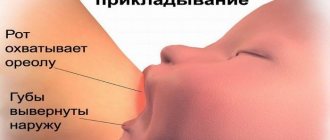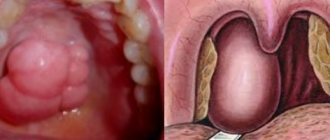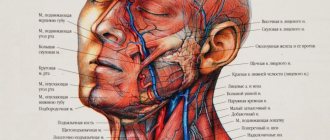What to do if your ear, nose or throat are bothering you?
Many conditions have pronounced symptoms: a person complains of localized ear pain or discomfort, a sore throat. But these organs are interconnected and often the infection covers a wide area. Unpleasant sensations and soreness develop throughout the nasopharynx, stuffy ears, or other signs of illness appear.
The Research Institute of Ear, Throat, Nose and Speech in St. Petersburg qualifies such ailments as diseases of the same class. What to do when several symptoms appear at the same time, if your throat hurts, your nose can’t breathe, and your ear is blocked? When the first warning signs appear, you should contact an otolaryngologist. You can make an appointment at a specialized institute or the nearest clinic so that adequate treatment can be prescribed.
Stuffed ear with a runny nose: causes of the symptom
Congestion in the ears due to a runny nose is one of the symptoms of a cold that many people have experienced.
But not everyone knows why this phenomenon occurs and how to deal with it. In order to properly help yourself and your loved ones restore normal hearing function, you need to understand the reasons why your ear becomes blocked when you have a runny nose or a cold.
The ear, throat and nose are interconnected organs.
If one of them becomes ill, the other may also become ill. How does this happen?
The mechanism of ear congestion is associated with the structure of the hearing organ . It consists of an outer, middle and inner part. Between the outer and middle ear is the eardrum.
For the normal functioning of the hearing organ, it is necessary that the pressure between these two parts be equal. If it differs, then a phenomenon such as congestion occurs, and the person hears poorly.
The pressure in the organ of hearing is regulated by the Eustachian tube, which is anatomically connected to the nasopharynx. This organ of hearing circulates air in two directions.
If your ear is blocked due to a runny nose, then it is necessary to take urgent measures, otherwise the pathogenic microflora that gets into the Eustachian tube will cause an inflammatory process called eustachitis. The disease is dangerous because a person can permanently lose their hearing.
In addition to obstruction of the Eustachian tube due to a runny nose, there are other causes of hearing loss:
What to do during pregnancy?
Ear congestion due to a runny nose is common in pregnant women. During pregnancy, many women experience constant swelling and mucus formation in the nose. This phenomenon is called allergic or vasomotor rhinitis.
At the same time, the mucous membrane of the nose and nasopharynx is almost always thickened, which provokes hearing impairment due to decreased patency of the Eustachian tube.
Treatment of runny nose and ear congestion during pregnancy should be carried out under the supervision of the attending physician.
What to do if your ear is blocked with a runny nose: basic treatment methods
The signs of a cold are known to every person.
If congestion in the ears appears, then this may indicate not only a common runny nose, but also serious inflammatory processes in the organ of hearing, so going to the clinic to see an otolaryngologist is mandatory.
In the case when the ear is blocked due to a runny nose, the therapy consists primarily of treating the disease that caused such a symptom.
In addition to getting rid of mucus and swelling in the nose, other ways to restore hearing function are recommended.
Main methods of treatment:
- Nasal drops. To relieve swelling and restore patency of the Eustachian tube, vasoconstrictor drops should be instilled into the nose. However, such drops relieve only a symptom, so only a doctor after an examination can accurately answer the question of what to do if your ear is blocked due to a runny nose.
- Drops in the ears. If a shooting pain appears in the ear, which increases in the evening, then we can talk about inflammation of the hearing organ. In this case, ear drops with an anti-inflammatory and analgesic effect are needed.
- Folk recipes. Natural medicines used in traditional medicine will help relieve ear pain and restore hearing. Propolis tincture works great for ear congestion. You can prepare it yourself at home or buy it at the pharmacy. K 100 gr. tinctures add 40 g. vegetable oil, mix. Gauze turundas are soaked in the solution and placed in the ear for a day.
- Warming up . One effective way to relieve ear congestion is an alcohol compress at night. How to do:
- Mix water and alcohol in equal proportions.
- Soak gauze with a hole cut in the middle with liquid and apply it to the ear so that the auricle is on the outside.
- Apply a second layer of gauze to your ear and cover with cling film.
- Apply cotton wool to the film and secure with a soft bandage.
In addition to medications and auxiliary treatment, doctors recommend drinking more warm liquids. Herbal teas with honey are very useful. They will not only relieve colds, nasal and ear congestion, but also strengthen the body's defenses.
Specialty: Otorhinolaryngologist Work experience: 29 years
Specialty: Audiologist Work experience: 7 years
https://gajmorit.com/nasmork/zalozhilo-uho-pri-nasmorke/
Manifestations of complex ENT diseases and their causes
Common manifestations of such ailments are combined discomfort or pain in several directions. The following symptoms are often observed:
- My ear and throat hurt on one side.
- The pharynx ring is hyperemic, discomfort occurs when swallowing, and a cough of varying intensity appears.
- My throat is bothersome and my nose is stuffy.
- Discharge of varying consistency appears from the nose, the ear shoots, and there is a feeling of a dry throat.
- Sore throat with dry cough.
Against the background of the inflammatory process, the temperature rises, a stuffy nose bothers you, and a shooting impulse in the ear haunts you.
Such symptoms are often accompanied by inflammation of the lymph nodes and hearing loss. The inflammatory process covers the entire nasopharynx or is limited to one-sided spread. A concomitant symptom may be pain radiating to the neck, ear on the right or left side.
Treatment of ailments with similar manifestations often turns out to be fundamentally different, since the causes of the problems are significantly different.
Factors causing such symptoms may include:
- Throat diseases of bacterial or viral etiology: tonsillitis, laryngitis, pharyngitis.
- Chronic inflammatory processes of the nasal mucosa or sinuses; adenoiditis is possible in children.
- Otitis.
- Allergic manifestations.
- Untreated dental diseases.
- Specific infections. For example, scarlet fever, chickenpox.
Pathogenic microorganisms in weakened immunity affect the mucous membrane, causing swelling, redness, pain when swallowing, a stuffy nose, and pain in the ear on the left or right side.
Coccal infections (staphylococcus, streptococcus) and viral ones (for example, herpes) are especially dangerous and require urgent action. The development of fungal microflora is possible, then cheesy discharge and white deposits appear, which are noticeable if you look into the mouth and examine the pharynx.
Temperature and pain in the throat and ear
EVERYONE should know about this! UNBELIEVABLE BUT TRUE! Scientists have discovered a SCARY relationship. It turns out that the cause of 50% of all ARVI diseases, accompanied by elevated temperature, as well as symptoms of fever and chills, are BACTERIA and PARASITES, such as Giardia, Ascaris and Toxocara. How dangerous are these parasites? They can deprive health and EVEN LIFE, because they directly affect the immune system, causing irreparable harm. In 95% of cases, the immune system is powerless against bacteria, and diseases will not be long in coming. To forget about parasites once and for all, while maintaining your health, experts and scientists advise taking.
The throat often hurts and there is discomfort in the ear. Often the temperature rises, which may indicate the presence of:
With acute otitis media, the ear hurts and at the same time you feel a lump in the throat, and the condition worsens in the evening. In many cases, the disease is accompanied by:
- General weakness and loss of strength,
- Loss of appetite,
- Heat.
Sometimes there may be pus in the ear, which indicates the presence of purulent otitis media. If there is tubotitis, then the body temperature also rises, there is a lump in the throat and ear pain. Additional manifestations of the disease include heaviness and noise in the head.
Acute pharyngitis is accompanied by:
- Sore throat that radiates to the ears,
- Dry cough
- Enlarged cervical lymph nodes,
- Tension in the muscles,
- Lump in throat
- Increasing temperature.
Pharyngitis in many cases is a consequence of bronchitis, rhinitis or general intoxication of the body. Typically, with this disease, the ear becomes blocked, and a lump in the throat is felt when swallowing. Measles, chicken pox and scarlet fever are most often reported in children.
Important symptoms, in addition to pain in the ears and throat, are the appearance of a rash and high fever. Since the symptoms of the diseases are largely similar, it is very difficult to make a diagnosis on your own. If any of the above symptoms appear, you should seek medical help.
With a sore throat, the throat and ears also hurt, and there is an elevated temperature. This infectious disease is characterized by an inflammatory process of the oropharynx and tonsil mucosa. In many cases, purulent processes appear against the background of sore throat.
In addition to high fever, accompanying symptoms include:
- Yellowish coating on the tongue,
- Uncomfortable sensations in the muscles,
- Sometimes pain in the heart area,
- Unpleasant odor from the mouth.
- The appearance of white purulent plugs on the tonsils.
Diphtheria is a rather serious disease, since this infectious disease can cause serious consequences for the body.
- Low temperature
- The ear and throat hurt at the same time,
- There is an inflammatory process at the site of the cut.
Since diphtheria can provoke intoxication of the body and damage to the cardiovascular system, you should consult a doctor at the first symptoms.
At the beginning of the disease, you can avoid exacerbation if you gargle frequently. When the disease is prolonged, in this case, the doctor will, in most cases, prescribe antibiotics. In order to recover quickly, you need to constantly be warm and strictly adhere to bed rest.
It must be remembered that if your nose is stuffy, there is a lump in your throat and your ears hurt, you need to avoid foods and drinks that irritate your throat. We are talking about the following products:
- Carbonated drinks,
- Alcohol,
- Solid food.
It is useful to drink tea with lemon and honey. For preventive purposes, you need to eat foods that are rich in vitamins.
How to make a diagnosis, features of the development of the disease
When making a diagnosis, a visual examination, including laryngoscopy or pharyngoscopy, is important. Standard clinical tests, a swab from the throat and nasal passages are also prescribed. The middle ear is examined and, if necessary, an x-ray is taken - for example, of the sinuses. The doctor decides what to do in each specific case. What is a doctor who treats the ear, throat or nose called in medical terminology? The name of his specialization is ENT or otolaryngologist, in common parlance - earworm.
Does your throat hurt and radiate to the right or left? Perhaps tonsillitis or another inflammatory disease of the larynx begins. If there are problems with the nose, rhinitis or sinusitis is highly likely to develop. Since the organs are interconnected, pathogenic microflora moves through the Eustachian tube into the middle ear. Sometimes the infection attack is limited - then the throat and ear hurt on one side.
With rapidly developing tonsillitis, especially purulent variants, the pain in the throat radiates to the ear. Similar symptoms are possible with the development of pharyngitis or laryngitis. The disease is accompanied by soreness and burning of the laryngeal mucosa. If the palate is inflamed, pain occurs when swallowing, and the throat is dry, then this is the reason for the possible onset of otitis media on the right or left side.
Cough during tracheitis or bronchitis (such ailments can be caused by progressive pharyngitis or laryngitis, mucus that irritates the epithelium enters the upper respiratory tract) needs to be mitigated and for this, taking mucolytics is indicated. Experts note that with otitis media, pain can radiate to the neck around the clock and the patient subjectively feels pain in the throat, which intensifies with swallowing and muscle tension.
When your throat and ears hurt due to fever
Very often, a sore throat radiating to the ear and accompanied by an increase in temperature may be a sign of diseases such as:
- Otitis;
- Tubotite;
- Acute pharyngitis;
- Measles;
- Scarlet fever;
- Chicken pox;
- Angina;
- Diphtheria.
With acute otitis media, the throat and ear hurt at the same time, and such pain usually worsens in the evening. Often this disease is accompanied by symptoms such as general weakness of the body, loss of appetite and high fever. Sometimes pus may leak from the ear, which indicates the presence of a type of this disease called purulent otitis media.
If a person gets tubotitis, then he also experiences an increase in body temperature, a sore throat and ear. Additional signs of this disease are often heaviness and noise in the head.
Acute pharyngitis is usually accompanied by the following symptoms:
- Sore throat radiating to the ear;
- Dry cough;
- Enlarged cervical lymph nodes;
- Sore throat;
- Muscle pain;
- Temperature increase;
- Sensation of a foreign body in the throat area.
Pharyngitis can often be a consequence of bronchitis, general intoxication of the body or rhinitis. As a rule, in the case of this disease, the throat and ear hurt, mainly when swallowing.
Scarlet fever, measles and chicken pox are more common in children. The main symptoms, in addition to sore throat and ears, can be considered high body temperature and the appearance of a rash. Since the signs of these diseases are largely similar, it is very difficult to independently establish a diagnosis: if such symptoms occur, you should immediately consult a doctor.
The throat and ears hurt at fever, also in the presence of a disease such as tonsillitis. This infectious disease is characterized by inflammation of the mucous membrane of the tonsils and oropharynx. Often, against the background of a sore throat, purulent processes develop in the body. In addition to high fever, additional symptoms include a yellowish coating on the tongue, pain in the muscles and sometimes in the heart area, chills and bad breath.
Diphtheria is a rather serious diagnosis, since this infectious disease is often life-threatening. The main signs: the throat and ears hurt at the same time, the temperature is high, and an inflammatory process is observed at the site of the cut on the skin. Since diphtheria can cause intoxication of the body and damage to the cardiovascular system, at the first symptoms of the disease it is necessary to call a doctor.
In the initial stages of the disease, exacerbations can be avoided by frequent gargling. If the disease is prolonged, in this case the doctor, as a rule, prescribes antibiotics. For a speedy recovery, it is necessary to maintain bed rest and avoid hypothermia.
Remember: when your throat and ear hurt, you should avoid drinks and foods that irritate your throat. Usually this is soda, especially chilled, various alcoholic drinks and solid food. It is recommended to drink teas with honey and lemon more often. For prevention purposes, you should eat foods rich in vitamins to strengthen your immune system.
Disease therapy
What to do if diseases of the ENT organs are diagnosed? Follow the doctor's recommendations. Having clarified the nature of the infection, the doctor prescribes antibiotics or antiviral agents.
If the pathogen is one of the types of bacteria, then antibacterial agents are prescribed:
- Traditional penicillin series: Amoxicillin or its improved version Amoxiclav, their dispersible generics - Flemoxin or Flemoclav Salutab. Generics taste good and dissolve easily, turning into a suspension.
- Macrolides - Azitsin, Sumamed. They differ in a short course of administration. The blister contains 3 tablets. This antibiotic has a prolonged effect.
- Cephalosporins are more modern, powerful drugs. Sorcef, Cefixime are indicated if the disease is rapidly progressing or the patient cannot tolerate other groups of antibacterial agents.
Among antiviral drugs, the leaders are Arbidol and Amizon. And the protective properties of the body will be supported by Imudon or Immunal.
If your ear is blocked or there is inflammation, then ear drops will be required. These are Sofradex, Otinum, Anaurin. They all have a different mode of action, so you should not self-medicate.
How to treat a throat? Anesthetics and antiseptics are suitable - tablets or lozenges for resorption: Adjisept, Chlorophyllipt, Faringosept, Lizak, Farington, Anzibel, Isla. Spray treatment is also effective for children over 3 years of age and adults. Popular: Kameton, Ingalipt, Tantum Verde, Miramistin, Yox, Givalex. For rinsing, you can use Furacilin solution, specially prepared by Tantum Verde, Rotocan.
To treat the nose, use Rinofluimucil, vasoconstrictor drops, Protargol with silver ions and other agents that the doctor will name.
For coughs, an emollient, antitussive tablets, lozenges, and syrups are prescribed.
ethnoscience
If you have pain in the throat on the left or right side, or discomfort in the ear, then pharmaceutical medicines can be used along with traditional recipes.
It is not recommended to treat pain or congestion in the ear on your own - it could be otitis media or a consequence of inflammation in the nasopharynx: for example, the presence of sinusitis. In this case, only the advice of a doctor will help.
Rinsing, inhalation using herbs and multi-component mixtures will help relieve the condition of an inflamed nasopharynx:
- Decoctions of sage, chamomile, and calendula will be an excellent antiseptic. The preparation standard is 1 tablespoon of raw materials per glass. These herbs will relieve intoxication in the body.
- Herbal infusions. Equal proportions of cornflower, juniper, and Gmelin's wormwood can be mixed with rosehip syrup and steamed in a thermos. The broth is filtered, it is recommended to drink it in a third of a glass or use it for rinsing.
- The following composition will heal and strengthen the immune system: currants, raspberries, rose hips, primrose. You can use leaves or fruits.
- Propolis is effective - a small piece should be chewed several times during the day.
- A teaspoon of chopped figs is dissolved in the mouth. It will eliminate pain in the throat.
- You can apply an alcohol compress to the ear: cut the moistened cloth in the center, put it on the sink, cover it with polyethylene and cover it with a towel.
It is not advisable to warm up the nose or ears if you are sick: under the influence of temperature, pathogenic microflora increases activity and inflammation progresses.
Stuffed ear with a runny nose: causes of the symptom
Congestion in the ears due to a runny nose is one of the symptoms of a cold that many people have experienced.
But not everyone knows why this phenomenon occurs and how to deal with it. In order to properly help yourself and your loved ones restore normal hearing function, you need to understand the reasons why your ear becomes blocked when you have a runny nose or a cold.
The ear, throat and nose are interconnected organs.
If one of them becomes ill, the other may also become ill. How does this happen?
The mechanism of ear congestion is associated with the structure of the hearing organ . It consists of an outer, middle and inner part. Between the outer and middle ear is the eardrum.
For the normal functioning of the hearing organ, it is necessary that the pressure between these two parts be equal. If it differs, then a phenomenon such as congestion occurs, and the person hears poorly.
The pressure in the organ of hearing is regulated by the Eustachian tube, which is anatomically connected to the nasopharynx. This organ of hearing circulates air in two directions.
If your ear is blocked due to a runny nose, then it is necessary to take urgent measures, otherwise the pathogenic microflora that gets into the Eustachian tube will cause an inflammatory process called eustachitis. The disease is dangerous because a person can permanently lose their hearing.
In addition to obstruction of the Eustachian tube due to a runny nose, there are other causes of hearing loss:
- When you have a cold, the body's defenses are reduced. This can lead to excessive wax build-up in the ears. As a result, a sulfur plug appears, which reduces the perception of sounds.
- A stuffy ear during a cold can be a sign of otitis media. This is the first symptom of a dangerous disease that can lead to serious complications. It is important to recognize it in time. Other symptoms of otitis media include throbbing, shooting pain in the ear, fever, and dizziness.
- The ear may become clogged due to inflammation of the facial nerve. In this case, pain in the ear radiates to the temple and lower facial part on the side where the nerve is inflamed. Half of the face may go numb. In this case, you should immediately seek medical help.
What to do during pregnancy?
Ear congestion due to a runny nose is common in pregnant women. During pregnancy, many women experience constant swelling and mucus formation in the nose. This phenomenon is called allergic or vasomotor rhinitis.
At the same time, the mucous membrane of the nose and nasopharynx is almost always thickened, which provokes hearing impairment due to decreased patency of the Eustachian tube.
Treatment of runny nose and ear congestion during pregnancy should be carried out under the supervision of the attending physician.
What to do if your ear is blocked with a runny nose: basic treatment methods
The signs of a cold are known to every person.
If congestion in the ears appears, then this may indicate not only a common runny nose, but also serious inflammatory processes in the organ of hearing, so going to the clinic to see an otolaryngologist is mandatory.
In the case when the ear is blocked due to a runny nose, the therapy consists primarily of treating the disease that caused such a symptom.
In addition to getting rid of mucus and swelling in the nose, other ways to restore hearing function are recommended.
Main methods of treatment:
- Nasal drops. To relieve swelling and restore patency of the Eustachian tube, vasoconstrictor drops should be instilled into the nose. However, such drops relieve only a symptom, so only a doctor after an examination can accurately answer the question of what to do if your ear is blocked due to a runny nose.
- Drops in the ears. If a shooting pain appears in the ear, which increases in the evening, then we can talk about inflammation of the hearing organ. In this case, ear drops with an anti-inflammatory and analgesic effect are needed.
- Folk recipes. Natural medicines used in traditional medicine will help relieve ear pain and restore hearing. Propolis tincture works great for ear congestion. You can prepare it yourself at home or buy it at the pharmacy. K 100 gr. tinctures add 40 g. vegetable oil, mix. Gauze turundas are soaked in the solution and placed in the ear for a day.
- Warming up . One effective way to relieve ear congestion is an alcohol compress at night. How to do:
- Mix water and alcohol in equal proportions.
- Soak gauze with a hole cut in the middle with liquid and apply it to the ear so that the auricle is on the outside.
- Apply a second layer of gauze to your ear and cover with cling film.
- Apply cotton wool to the film and secure with a soft bandage.
- Exercises. Simple manipulations will help relieve nasal congestion. Pinch the wings of your nose and try to exhale. The air, having no outlet through the nose, will rush to the ears under pressure. At the same time, you can hear a pop. As a rule, nasal congestion goes away after this exercise.
In addition to medications and auxiliary treatment, doctors recommend drinking more warm liquids. Herbal teas with honey are very useful. They will not only relieve colds, nasal and ear congestion, but also strengthen the body's defenses.
Specialty: Otorhinolaryngologist Work experience: 29 years
Specialty: Audiologist Work experience: 7 years
https://gajmorit.com/nasmork/zalozhilo-uho-pri-nasmorke/
The connection between diseases of the throat, nose and ear: the cause and how to treat?
If you cover your mouth, press your nose with your fingers and blow, you can immediately feel noise and unpleasant movement in your ears. Why this happens can be understood by learning how the ear is connected to the nose. Why do children suffer from ear, throat, and nose diseases more often than adults, and why does a runny nose provoke inflammation of the middle ear? All this comes from the direct connection of these organs with each other.
Although the ear, nose and throat perform completely different functions, they are closely interconnected. This is a single system, the health of which must be carefully monitored, because, for example, a sore throat can provoke sinusitis if an infection enters the nasal sinuses. And yet, how are the nose and throat connected , and why can an infection of one organ be dangerous for another?
All of the above organs are interconnected through anatomical sinuses. Each organ has its own sinus, through which there is communication with other parts that intersect with each other. To put it simply, a sinus is a small depression. The nasal cavity is covered with mucous membrane, and through small openings it communicates with the maxillary and frontal sinuses. The maxillary sinuses are located on both sides of the nasal cavity, and are air chambers whose walls are made up of bones, which in turn are covered inside with mucous membrane.
The middle ear, which is the connecting element between the ear and the throat, is structured in a similar way, but in addition it also has a complex system of auditory elements in the form of the hammer, incus and stapes. The middle ear is often also called the paranasal sinus. The cavity of this organ is connected to the nasopharynx through the auditory tube, which is the space behind the nasal cavity. The auditory tube, in turn, allows ventilation of the tympanic cavity and serves for its drainage.
Ear, throat, nose treatment requires immediate treatment if the infection has entered one of the organs, since due to the anatomical proximity, inflammatory processes in the nose can lead to complications with the maxillary sinuses or middle ear. In children, diseases of the nasopharynx more often lead to otitis media, and this is explained by the fact that the auditory tube is much shorter than in adults, and its almost horizontal location simplifies the path of infection to the neighboring organ.
If you experience various diseases of the ear, nose or throat, you should consult an otolaryngologist. This complex name is formed from the combination of three Greek words: “oto” - ear, “rino” - nose, “laringo” - throat. Thus, combining all the parts together, we get a complex name, which was shortened to the ENT version, swapping the words for euphony. At the doctor's appointment, all organs will be examined to make a diagnosis and prevent infection of healthy organs.
The most common diseases of the nasal cavity are sinusitis, sinusitis and rhinitis. Speaking of ear infections, they include otitis media, tympanitis and eustachitis (inflammation of the Eustachian tube). The pharynx and larynx are most often affected by tonsillitis, laryngitis and pharyngitis.
Due to the danger of transition from one disease to another in the ear-nose-throat system, it is necessary to take preventive measures. Doctors recommend doing physical activity more often and hardening yourself. Simple dousing with cold water helps well in hardening. Eating the right foods and a balanced diet will strengthen your immune system.
If an infected person appears in your environment, you need to limit contact with him until he recovers. Daily morning and evening ventilation of the apartment allows you to clean the room from possible pathogenic bacteria that have already entered it.
With the onset of the cold season, it is best to increase your intake of vitamins, both in natural form and in the form of mineral complexes designed to strengthen the immune system and maintain it. After all, it is the lack of any substances in the body that reduces the protective threshold of the immune system.
According to statistics, more than 45% of all registered diseases occur specifically in the ENT system. In most cases, complications are provoked by colds, which are important not to neglect and to take timely measures to eliminate them, because curing a cold is much faster and easier than later dealing with sinusitis or otitis media.
Any infectious disease, including organs such as the ear, throat and nose, is necessarily accompanied by an increase in temperature, and the acute condition is observed for more than three days. Some diseases require antibiotic therapy to treat. To avoid a blow to the body from infection and strong medications, you should respond to the problem in a timely manner.
How are the ears, nose and throat connected?
Why are ears, nose and throat treated together?
I was always surprised that one doctor, who is called “ear, nose and throat,” deals with the nose, ears and throat. After all, the ears are the organ of hearing, the nose is the organ of breathing and smell, and the throat is part of the respiratory and digestive systems. Why are these organs united together?
First, you need to correct a very common and, to some extent, offensive mistake. Calling a doctor “ear, nose and throat” is incorrect and incorrect, especially when you apply for a coupon at a clinic. After all, you don’t go to see a “gastrointestinal” doctor or a “heart” doctor, that is, a gastroenterologist and cardiologist. An ear, nose and throat specialist has
two official titles: otorhinolaryngologist (sometimes called “otolaryngologist” for short) or ENT doctor. Both of these names come from the Greek words for ear (oto), nose (rino) and throat (laringo), only in the second case the order of these words in the name of the specialty is changed and is translated as “throat-ear-nose”.
Care for the mouth, nose, eyes, hair, ears
The oral cavity is treated 2 times a day. For it you need to prepare: a spatula, cotton balls, sterile gauze wipes, tweezers, an antiseptic solution (2% sodium bicarbonate solution, 5% sodium tetraborate solution), warm boiled water.
Processing technique:
1) wrap your tongue in a sterile gauze pad and carefully pull it out of your mouth with your left hand;
2) moisten a cotton ball with an antiseptic solution and, removing plaque, wipe the tongue;
3) release the tongue, change the tampon and wipe the teeth from the inside and outside (pre-soak the tampon with an antiseptic; the teeth are exposed using a spatula);
4) ask the patient (if he is able to do this) to rinse his mouth with warm water, otherwise it is necessary to rinse the patient’s mouth with warm water (or an antiseptic solution) yourself.
Technique for rinsing the patient's mouth:
1) pour a warm antiseptic solution into Esmarch’s mug and hang it 1 meter above the patient’s head;
2) turn the patient’s head to one side, cover the neck and chest with oilcloth, and place a tray under the chin;
3) pull back the corner of the mouth with a spatula, insert the tip into the vestibule of the mouth and rinse it with a stream of liquid under moderate pressure;
4) rinse the left and right cheek space alternately.
If the patient has removable dentures in the oral cavity, they should be removed before the procedure.
Ear hygiene technique: ears should be washed with warm water and soap. Wax accumulated in the external auditory canal should be carefully removed with a cotton swab, after dripping 2-3 drops of a 3% hydrogen peroxide solution into the ear, pulling the auricle backwards and upwards (the patient should lie down). After instilling hydrogen peroxide, the patient should be in a lying position for 1-2 minutes.
Technique for hygienic treatment of the nasal cavity: if there is nasal discharge, it should be removed with cotton swabs, inserting them into the nasal passages with light rotational and translational movements. When crusts form, they should be removed with cotton wool soaked in vegetable oil or glycerin. In this case, the turunda should remain in the nasal passage for 2-3 minutes, after which it is removed and the crusts are removed. You can drip vegetable oil or glycerin into your nose, and then remove the crusts with a cotton swab.
Hygienic treatment of the eyes is carried out with a sterile swab moistened with an antiseptic solution (0.02% furatsilin solution or 1-2% sodium bicarbonate solution):
1) wash your hands thoroughly;
2) put 8-10 sterile swabs into a sterile tray and pour one of the listed solutions into it;
3) lightly squeeze the swab and wipe the eyelashes and eyelids with it in the direction from the outer corner of the eye to the inner one; throw away this tampon;
4) take another tampon and repeat wiping (4-5 times with different (!) tampons);
5) remove the remaining solution with a dry swab
Hygienic hair treatment: hair should be combed daily, hair should be washed once a week.










